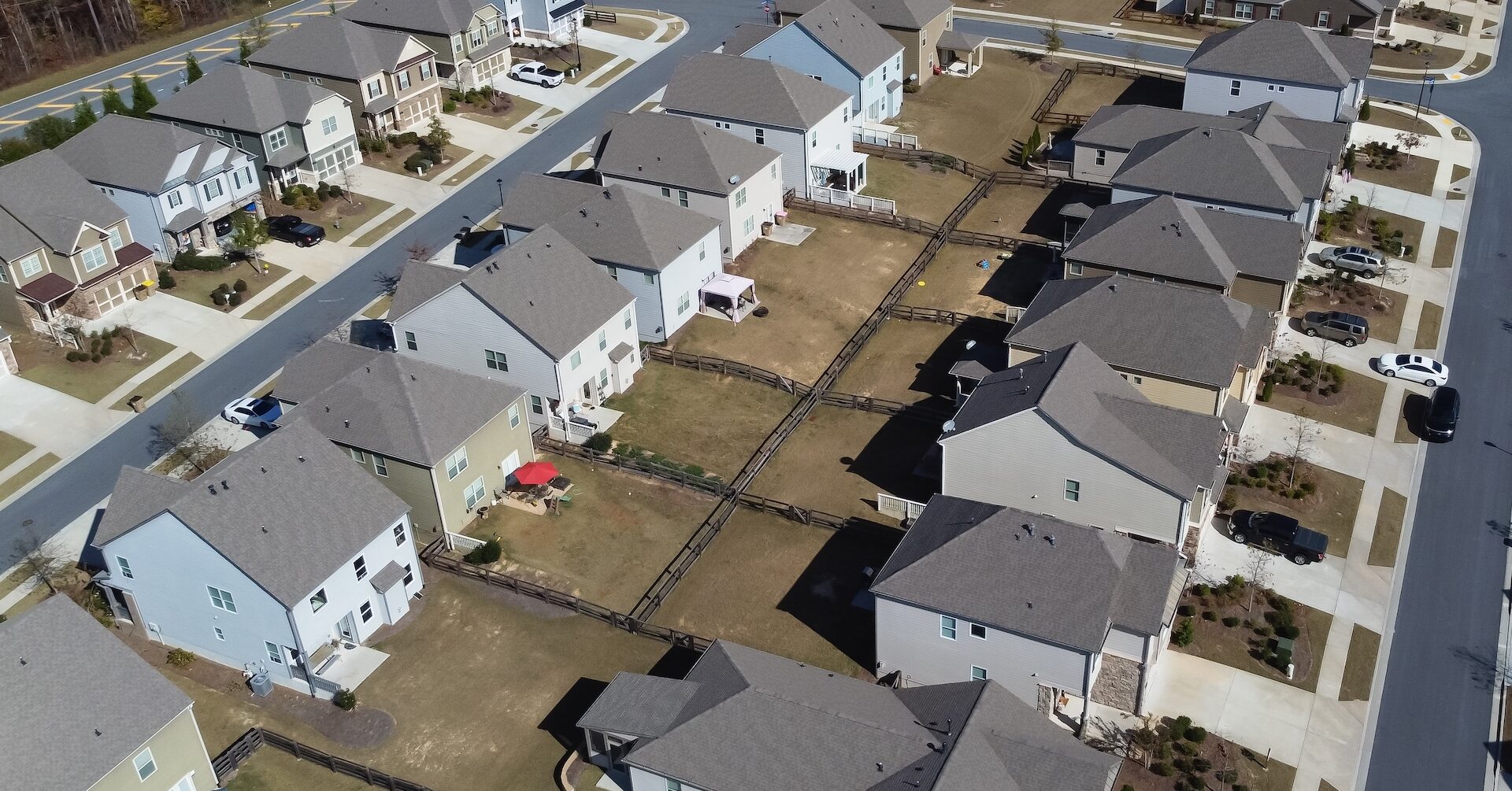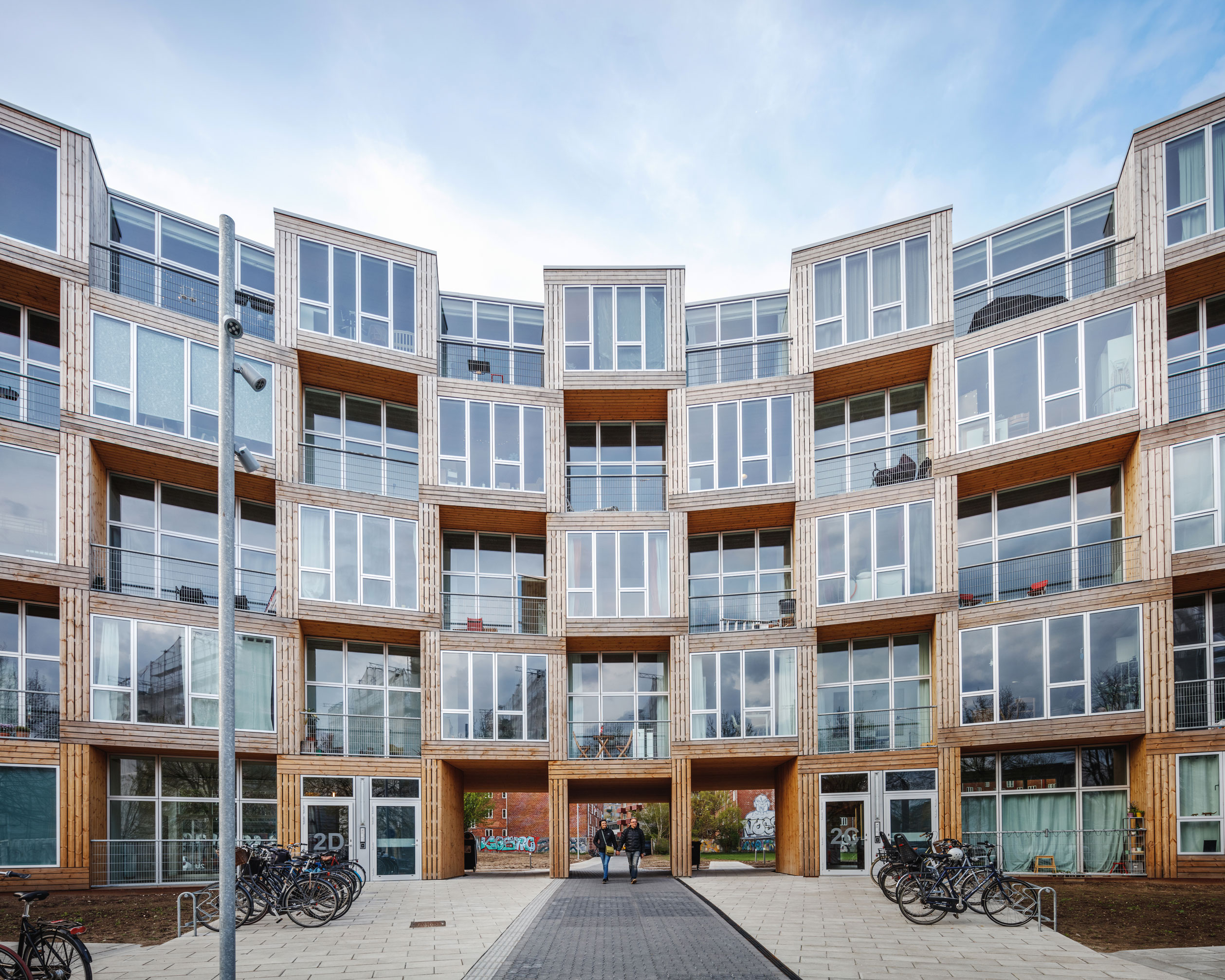
Across the Atlantic, two distinct but equally pressing housing crises are unfolding, demanding urgent attention. In the United States, a complex mix of market forces and recent government actions appears to be exacerbating affordability challenges, impacting federal housing programs and sending ripple effects through communities and non-profit organizations. Meanwhile, Spain is grappling with a “social emergency” driven by skyrocketing rents, prompting protests and various government interventions with debated outcomes.
The US situation has been significantly shaped by recent directives from the Department of Government Efficiency (DOGE), led by Elon Musk, under the Trump administration. Tasked with identifying and eliminating waste, DOGE has initiated a spree of federal government cuts impacting various departments, including the Department of Housing and Urban Development (HUD). HUD is the primary federal agency responsible for national policy addressing housing needs and enforcing fair housing laws.
Secretary Scott Turner, appointed by President Trump, is reportedly reviewing HUD’s mission and considering significant cuts across the department. Alex Schwartz, a professor of urban policy at The New School, describes the agency’s current state succinctly: “In one word: Badly.” He notes that while the Trump administration proposed sharp reductions and program eliminations during its first term, Congress did not approve them. However, with DOGE now involved, Schwartz suggests they are “basically undermining the capacity of the agency to fulfill its mission.” Turner has reportedly embraced this mentality, launching his own DOGE taskforce within HUD.

A particularly impactful action has been the halt of federal housing projects. This includes the $1 billion Green and Resilient Retrofit Program. This program, passed by Congress in 2022 as part of the Inflation Reduction Act, was intended to provide direct loans and grants for energy efficiency improvements and climate resilience in affordable housing, reportedly helping preserve tens of thousands of units for low-income Americans. A HUD spokesperson told TIME that the “previous Administration’s extreme energy efficiency crusade diverted valuable resources” and that the department is evaluating options for communities that “are not solar panels.”
Beyond specific programs, DOGE directed HUD in February to slash millions in federal housing contracts. This directive specifically led to the termination of 78 Fair Housing Initiatives Program (FHIP) grants. These grants, totaling more than $30 million, were distributed across 33 states and funded organizations dedicated to combatting housing discrimination, enforcing fair housing laws, and educating individuals about their rights. The abrupt cancellation has drawn significant criticism.
The termination of these FHIP grants has spurred legal action. On March 13, four fair housing organizations—Massachusetts Fair Housing Center, the Intermountain Fair Housing Council, Fair Housing Council of South Texas, and the Housing Research and Advocacy Center—filed a class action lawsuit against HUD and DOGE. These groups, all members of the National Fair Housing Alliance, argue that their FHIP grants were “arbitrarily terminated without notice, reason, or sensible explanation” on February 27, 2025. The lawsuit contends that $30 million in congressionally approved funding is now in jeopardy.

The lawsuit further states that the cancellation has caused “an immediate and devastating impact” on the plaintiff organizations. They have reportedly been forced to “shutter programs, terminate services, lay off staff members, and shrink their core activities.” Many of these class members operate in areas where they are the sole organization providing such services, often serving overlooked communities such as rural areas, low-income neighborhoods, immigrant groups, veterans, and people with disabilities.
These cuts have reportedly stalled projects in over 1,000 communities nationwide. This impact stems, in part, from eliminating funding for two of the three organizations responsible for administering the Section 4 program, a federal initiative supporting housing development in underserved areas. Major non-profits crucial to housing initiatives, such as Local Initiatives Support Corporation (LISC) and Enterprise Community Partners, were significantly affected, collectively losing $30 million in cancelled grants.
Specific examples highlight the local impact. LISC-funded projects now indefinitely stalled include lead-based paint removal in Arkansas, support for first-time homebuyers among teachers in the Mississippi Delta, and renovations for an abandoned mill in Maine. Enterprise Community Partners had spent the previous year training smaller organizations to apply for and manage grants designed to help low-income families access better housing opportunities. These grants, typically modest at $50,000 increments, have reportedly vanished overnight.

Shaun Donovan, CEO of Enterprise and a former HUD secretary, warned that these cuts would “raise costs for families, hobble the creation of affordable homes, forfeit local jobs, and sap opportunity from thousands of communities in all 50 states.” Despite efforts by some local projects to secure alternative funding, many are reportedly facing closure. The broader financial changes and cuts, according to Alex Schwartz, could potentially undercut much of HUD’s major charges, including enforcing fair housing and developing affordable housing, despite Trump’s campaign focus on affordability.
Staffing within HUD is also reportedly facing significant reductions. As other federal departments encounter severe staff cuts, HUD is bracing for mass layoffs, with probationary employees already having been fired. Secretary Turner has promised to reduce “waste” in a manner similar to DOGE’s approach. While the exact numbers are not yet finalized, a report from the Center on Budget and Policy Priorities (CBPP) suggests potential cuts could be substantial, affecting offices responsible for vouchers, public housing, Native American housing (potentially 50% staff reduction), project-based rental assistance (44%), homelessness assistance and grants (84%), and fair housing law enforcement (77%).
Antonio Gaines, president of AFGE National Council 222, a union representing HUD employees, told Bloomberg Law that the Trump Administration was planning to terminate 50% of HUD’s workforce, including staff in civil rights law enforcement and disaster recovery departments. Will Fischer, Senior Fellow and Director of Housing Policy at the CBPP, notes that there is “really strong evidence base that a lot of what HUD does is really effective in reducing homelessness and helping people afford housing.” He adds that these programs already only reach a fraction of those who need help due to funding limits, and the cuts are “going in the opposite direction by disrupting and undermining.”
Margaret Salazar, a housing expert who worked at HUD for 12 years under three administrations, believes that while programs may technically exist, they will be less effective with reduced personnel. She highlights that half of HUD’s staff is traditionally in field offices, crucial for local connections. Bloomberg reported plans to close dozens of field offices, though US housing law requires at least one field office per state to process applications for the Federal Housing Administration (FHA), which is also facing cuts. Salazar’s former colleagues reportedly remain confused and fearful, worrying about the future of housing projects alongside their potential layoffs.

The current crisis occurs as housing affordability in the US has reached an all-time low. According to Will Fischer, in 2023, 24 million people lived in low-income households spending more than half their income on rent, making them vulnerable to eviction. By January 2024, a record 770,000 people were experiencing homelessness, living in shelters, cars, tents, or unsafe conditions. Realtor.com estimates the US housing market needs an additional 3.8 million homes to meet 2024 demand, a shortage expected to worsen due to the elimination of crucial funding, potentially fueling public outcry.
Recent market data underscores the pressure. Monthly housing costs in the US reached a record $3,104 in January. Mortgage payments alone have nearly doubled in the past five years, averaging $2,237 per month, in addition to estimated monthly costs of $416 for property taxes and $361 for insurance. The median home price surged to $446,300, the second-highest in history. The National Association of REALTORS reported a 4.6% drop in pending home sales in January across the Midwest, South, and West, with the Pending Home Sales Index (PHSI) falling to an all-time low of 70.6. Year-over-year, pending transactions declined by 5.2%. Housing affordability also suffered as mortgage rates in January ranged from 6.91% to 7.04%, resulting in the monthly mortgage payment on a $300,000 home increasing by $50 from the previous year to $1,590.
Political stances on fair housing and DEI initiatives are also central to the changes. The rejection of Asheville, North Carolina’s disaster recovery request on March 11, based on its plan to prioritize assistance for Minority and Women Owned Businesses (MWBE), clearly illustrated the enforcement of Trump’s January Executive Order titled ‘Ending Radical And Wasteful Government DEI Programs And Preferencing’. This order effectively dismantled diversity, equity, and inclusion efforts at the federal level and those using federal funds. Secretary Turner stated, “Once again, let me be clear, DEI is dead at HUD. We will not provide funding to any program or grantee that does not comply with President Trump’s Executive Orders.”
This stance has been met with sharp criticism from Democratic lawmakers. Sen. Elizabeth Warren and Rep. Maxine Waters issued a statement on February 27, calling the termination of anti-discrimination housing rules an “outright assault on civil rights” that “takes us back to the days when the federal government rubber stamped segregation and discrimination.” On March 3, Waters delivered a letter to Turner and led an event outside HUD offices to “sound the alarm on how Trump and DOGE’s actions will worsen our nation’s housing and homelessness crisis and exacerbate discrimination in housing.” Later, on March 17, Warren and Waters, joined by 106 Congressional Democrats, sent a letter to Turner “demanding answers” regarding actions to “gut enforcement of the Fair Housing Act of 1968 and other housing-related civil rights laws.” Alex Schwartz suggests the defunding of fair housing groups “signals” that the federal government is not concerned about discrimination and “is certainly not going to help educate people about their rights.” However, in an interview, Turner stated HUD “will uphold the law” and is “committed to uphold[ing] the Fair Housing Act.”

Amidst these cuts and challenges, Secretary Turner and President Trump have outlined a new strategy to address the housing crisis: building homes on some of the 650 million acres of federal land. A task force, led by Turner and Interior Department Secretary Doug Burgum, was announced on March 17. In a Wall Street Journal op-ed, Turner and Burgum argued that “America needs more affordable housing” and “making federal land available” will help, focusing on “overlooked rural and tribal communities.” They described building on federal land as historically a “nightmare of red tape” but claimed their partnership would “cut through the bureaucracy.”
It is worth noting the spread of misinformation surrounding housing initiatives. In late March 2025, a claim circulated online that Elon Musk had invested $5 million to build affordable housing for low-income families. Snopes rated this claim as false, finding no demonstrable evidence in legitimate news or Musk’s official X account. The article promoting this claim appeared on content-farm websites and was likely AI-generated. An image used in the article was linked to Boxabl, a modular home company, which Musk reportedly uses, but there was no evidence Boxabl had built homes specifically for low-income families, with their projects including building for the Department of Defense and worker housing at a mine.
Shifting focus to Europe, Spain is grappling with its own severe housing crisis, characterized by the government as a “social emergency.” Over the past decade, while salaries have increased by only around 20%, the average rental cost has doubled, including an 11% increase in the last year alone, according to Idealista figures. Housing has become Spaniards’ biggest worry, leading to public anger and protests in Madrid and dozens of other cities on April 5 demanding action.

Juan Villén of Idealista points to a “huge imbalance between supply and demand” as a core problem. He notes that while demand is “very good” due to a “growing a lot” economy, supply is “dwindling very fast.” He cites Barcelona as an example, where five years ago nine families competed for each rental property, but now that number has surged to 54, and rental costs have increased by 60% during that period. Villén argues that more properties need to be built and more people need to be willing to rent properties or buy, refurbish, and put them on the rental market.
The central government agrees that a lack of supply is a major driver. The Housing Ministry estimated last year that Spain needs between 600,000 and one million new homes over the next four years to meet demand. This need is partly driven by the arrival of immigrants who are joining the workforce and contributing to Spain’s economic growth. The ministry also highlighted the country’s low rate of social housing, which at 3.4% of total supply, is among the lowest in Europe.
Spain’s building rates have lagged significantly behind historical peaks. In 2007, during the height of a property-ownership bubble, more than 600,000 homes were built. In contrast, just under 100,000 homes were completed in 2024. This restriction in construction is attributed to factors including high building costs, a lack of available land, and a shortage of manpower. The government has taken measures to incentivize construction, such as apportioning land for affordable homes, while also attempting to ensure that public housing does not end up in the private market, a problem encountered in the past.
Tenant experiences illustrate the severity of the situation. Blanca Castro, a tenant in central Madrid, describes her apartment building near Atocha station where the company owner has reportedly stopped responding to requests for basic maintenance after informing tenants their contracts would not be renewed. She lives with a large hole in her kitchen ceiling dripping water, rendering it unusable, forcing her to wash dishes in the bathtub and improvise a cooking area with a camping stove. Blanca and her neighbors are vowing to stay despite what they see as efforts to push them out. She states that a similar home in the area would cost “double or more” what she currently pays, which is “not viable.” Spain’s central bank reported that nearly 40% of families who rent now spend more than 40% of their income on accommodation.

Prime Minister Pedro Sánchez has expressed a willingness to intervene in the market to control rental prices. At the opening of low-rent flats in Seville, he stated that Spaniards “want us to act, they want the housing market to operate according to the law of reason, of social justice, not the law of the jungle; they want to ensure that vulture funds and speculators are not doing whatever they like.” Both the central government and local administrations have identified short-term tourist accommodation as contributing to the problem, following protests in areas like the Canary Islands, Balearic Islands, and mainland cities where locals complained about the impact of surging tourism on rental costs.
In response to concerns about tourist accommodation, several city halls have announced plans to restrict granting tourist-flat permits. Barcelona is reportedly taking a more drastic step, planning to revoke the licenses of all of the city’s roughly 10,000 registered short-term apartments by 2028. The Sánchez government has also advanced a housing law that includes a cap on rentals in designated “high-tension” areas where prices are rising rapidly.
Political resistance has meant this rental cap legislation is currently only implemented in the northern regions of the Basque Country, Navarre, and Catalonia, and its success is a subject of debate. Socialist-led governments in Catalonia and nationally point to a 3.7% drop in rental costs in Catalonia’s high-tension areas since the cap’s introduction a year ago, with Barcelona seeing a 6.4% decrease. However, critics warn that the rental cap has “spooked owners” and led to thousands of properties being withdrawn from the market. Juan Villén argues that “all measures taken by the local or national governments are going against landlords,” leading even build-to-rent projects to sell properties rather than enter the rental market.
As DOGE’s budget cuts and policy shifts reshape the housing landscape in the United States, leaving millions facing higher costs and diminished support, and Spain navigates its acute rental crisis through market interventions and supply-side efforts, the path toward housing affordability in both nations remains marked by significant challenges, policy debates, and uncertainty for residents and organizations on the ground. The ongoing legal actions and community impacts in the US mirror the public outcry and governmental responses seen in Spain, underscoring the shared urgency of the housing challenges facing these distinct economic environments.
Related posts:
Trump v. California on women’s sports, a risky mortgage retread, and other commentary
US faces housing crisis. Why Elon Musk’s DOGE is to blame
How the Department of Housing Is Faring Under Trump




